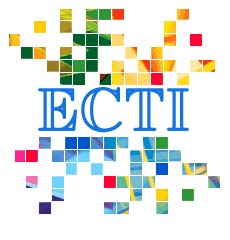BCH-based Compactors with Data Compression for Test Responses
Main Article Content
Abstract
This paper presents a novel approach to compacting a test response for a multiple scan chains design. The compactor design is based on an extended ( + 1; k) BCH code, where k is the number of information bits and
+ 1 is the number of bits in the block. It can detect any odd number of single bit errors or up to 2t single-bit errors, where t is a positive integer,
- k
mt, and
+ 1 = 2m. Also we use a controllable mask to handle any number of unknown logic values (Xs) on test responses. We show how extra control data can be reduced by proposed compression technique. Compared to augmenting previous space compaction techniques with additional circuitry to mask any number of Xs, our approach can detect more single-bit errors with minimum number of compactor outputs. This leads to fewer tester channels, shorter test application time, and smaller test data volumes regardless of the Circuit Under Test (CUT) and fault models.
Article Details
This journal provides immediate open access to its content on the principle that making research freely available to the public supports a greater global exchange of knowledge.
- Creative Commons Copyright License
The journal allows readers to download and share all published articles as long as they properly cite such articles; however, they cannot change them or use them commercially. This is classified as CC BY-NC-ND for the creative commons license.
- Retention of Copyright and Publishing Rights
The journal allows the authors of the published articles to hold copyrights and publishing rights without restrictions.
References
[2] S. Mitra, S. S. Lumetta, M. Mitzenmacher, N. Patel, "X-Tolerant Test Response Compaction," Design and Test Computers, pp. 566-574, Nov-Dec 2005.
[3] P. Wohl, J. A. Waicukauski, T. W. Williams, "Design of Compactors for Signature-analyzers in Built-in Self-test," ITC, pp. 54-63, 2001.
[4] J. H. Patel, S. S. Lumetta, S. M. Reddy, "Application of Saluja-Karpovsky Compactors to Test Responses with Many Unknowns," Proc. of VTS, pp. 107-112, 2003.
[5] S. Mitra, K. S. Kim, "X-Compact: An Efficient Response Compaction Technique," Trans. on Computer-Aided Design, vol. 23, no. 3, pp. 421-432. 2004.
[6] B. Pouya, N. A. Touba, "Synthesis of Zero aliasing Element-tree Space Compactors," Proc. of VTS, pp. 70-77, 1998.
[7] C. Wang, S. M. Reddy, I. Pomeranz, J. Rajski, J. Tyszer, "On Compacting Test Response Data Containing Unknown Values," Proc. of ICCAD, pp.855-862, 2003.
[8] J. Rajski, J. Tyszer, C.Wang, S. M. Reddy, "Convolutional Compaction of Test Responses," ITC, pp. 745-754, 2003.
[9] E. H. Volkerink, S. Mitra, "Response Compaction with any Number of Unknowns Using a new LFSR Architecture," DAC, pp. 177-122, 2005.
[10] V. Chickermane, B. Foutz, B. Keller, "Channel Masking Synthesis for E±cient On-Chip Test Compression," ITC, pp. 452-461, 2004.
[11] Y. Tang, H-JWunderlich, H. Vranken, F. Hapke, M. Wittke, P. Engelke, I. Polian, B. Becker, "X-Making During Logic BIST and Its Impact on Defect Coverage," ITC, 2004.
[12] M. Naruse, I. Pomeranz, S. M. Reddy, S. Kundu, "On-Chip Compression of Output Responses with Unknown Values Using LFSR Reseeding," ITC, pp.1060-1068, 2003.
[13] I. Pomeranz, S. Kundu, S. M. Reddy, "On Output Response Compression in the Presence of Unknown Output Values," Proc. of DAC, pp. 255-258, 2002.
[14] H. Tang, C. Wang, J. Rajski, S. M. Reddy, J. TYszer, and I. Pomeranz, "On Efficient X handling Using a Selective Compaction Scheme to Achieve High Test Response Compaction Ratios," Proc. of VLSI Design, 2005.
[15] I. Pomeranz, S. Kundu, S. M. Reddy, "Making of Unknown Output Values during Output Response Compression by Using Comparison Units," Trans. on Computers, Vol. 53, No. 1, pp. 83-89, 2004.
[16] G. Mrugalski, J. Rajski, J. Tyszer, "Test Response Compactor with Programmable Selector," DAC, pp. 1089-1094, 2006.
[17] S. Lin, D. J. Costello, Jr., Error Control Coding, Pearson Education, Inc., 2004.
[18] T. Reungpeerakul, X. Qian, and S. Mourad, "BCH-based Compactors with Data Compression," Proc. of ECTI-CON, pp. 685-688, 2008.
[19] D. Kay, and S. Mourad, "Compression Technique for Interactive BIST Application," Proc. of VLSI Test Symposium, pp. 9-14, 2001.
[20] A. Chandra, and K. Chakrabarty, "Test Data Compression and Test Resource Partitioning for System-on-a-Chip Using Frequency-Directed Run-Length (FDR) Codes," Trans. on Computers, vol. 52, no. 8, pp. 1076-1088, 2003.
[21] A. Chandra, and K. Chakrabarty, "System-on-a-Chip Test-Data Compression and Decompression Architectures Based on Golomb Codes," Trans. on Computer-Aided Design, vol.20, no. 3, pp. 355-
368, 2001.
[22] K. Sayood , Introduction to Data Compression, Academic Press, 2nd ed., 2000.


